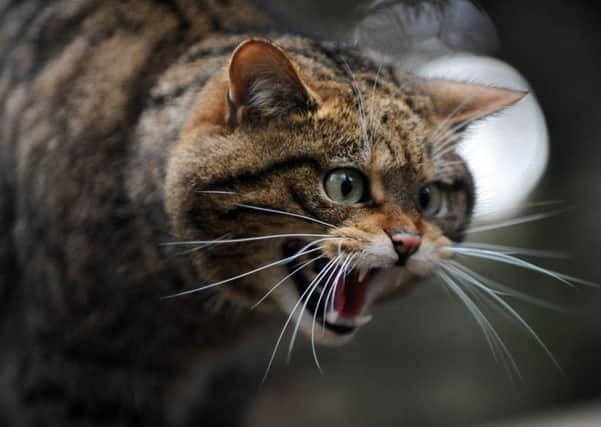Endangered wildcats facing feline HIV outbreak


Experts say they have isolated two cases of Feline Immunodeficiency Virus (FIV) from cats with a mixed domestic-wildcat ancestry.
One of the cases was detected in an area that has been identified as a priority zone for wildcat conservation.
Advertisement
Hide AdAdvertisement
Hide AdAlthough FIV is common in feral cats, researchers said these are the first known cases of the virus affecting hybrid cats in a wildcat priority area.
The discovery was made by wildlife experts from the University of Edinburgh’s Royal (Dick) School of Veterinary Studies and National Museums Scotland after carrying out post-mortem examinations on 23 feral and hybrid cats from around Scotland.
One of the animals to test positive for the virus was a long-haired tabby found dead in a barn in Morvern in the western Highlands – one of six places identified by Scottish Wildcat Action last year as a priority area for wildcat conservation.
There is currently no vaccine for FIV which is transmitted mainly when adult male cats fight.
Professor Anna Meredith, of the Royal (Dick) School of Veterinary Studies, said: “This recent find confirms that pet owners must be encouraged to vaccinate and neuter their cats, particularly if they live in a wildcat priority area.
“Cats are susceptible to other illnesses, such as cat flu and feline leukaemia virus, and these can be common in feral cats too. That means the importance of vaccinating and neutering cats is at an all-time high as we continue to work together to save our Scottish wildcat.”
Dr Roo Campbell, Scottish Wildcat Action project manager, said: “Communities across Scotland can play a huge part in helping us to save the wildcat by contacting their local project officer or reporting sightings through our website.
“We have less than five years to make a big impact as part of our Scotland-wide wildcat action project, but we can make a huge difference not only by drawing on the expertise of our partners but also by working with local people at every level.”
Advertisement
Hide AdAdvertisement
Hide AdLast year, it was estimated that in the Cairngorms, one of the species’ one-time strongholds, there could be as few as 35 to 150 breeding pairs.
In July 2014, a designated Scottish wildcat sanctuary was established on the remote Ardnamurchan peninsula in the west Highlands.
Scottish Wildcat Action is a national project to save the species that involves 21 partner organisations.